The final night of the European Soccer Cup in July, 2016, brought together some of the world’s greatest sports figures and fans. France, the hosting team, was hoping to ride a wave of wins to capture their third Eurocup title, following successes in 1984 and 2000. But it was not to be, as Portugal won its first-ever European championship in a 1-0 extra time victory.
Along with the stars on the field, fans in the seats, and extra security forces everywhere, there were some unexpected visitors at the national Stade de France Stadium—swarms of medium-sized moths, known as Silver Ys (Autographa gamma).
The moths had been attracted to the Stade de France by its floodlights. The stadium, built for the 1998 Soccer World Cup, sits like a great elliptical space ship in the northern Parisian suburb of Saint Denis. It looks particularly spectacular at night. Meanwhile, the Silver Ys are quite ordinary looking. They are brown and grey, with a sort of y-shaped marking on the wings and a wingspan of 3-4 cm (~1-1.5 inches).

The Silver Ys are migratory and very common across Europe. The moths winter around the Mediterranean and head north in the summer in search of new breeding grounds. Many of the moths—millions, if conditions are good—end up in the UK, following fast-moving airstreams hundreds of meters above the ground that allow them to travel at speeds reaching 50 km per hour (~30mph).
On the night of the soccer final, the moths were out in abundance, described as rising from the turf in great clouds when officials first stepped onto the Stade de France field. Players and referees were seen swatting the moths before the game began, while stadium staff tried to vacuum or sweep them away with wide brooms. During the match, one famously flew by Portuguese team hero, Cristiano Ronaldo, who was forced to abandon the match after only 18 minutes of play due to a knee injury. The moth added lightness to the tension and drama on the field.
I live in Nairobi, Kenya, and it is easy to relate to the feelings of human helplessness and frustration experienced in the face of swarming insects. Twice a year, during the rainy seasons (April-May, October-November) we experience the nightly emergence of thousands of flying termites. Attracted to light, they arise from the ground in great waves, and in a determined pursuit to find a mate. The winged termites, known as alates, are the sexually viable members of the colony. They have one assignment: to reproduce with a fellow flyer from another colony.
The pursuit is a desperate one, however, as the termites naturally lose their wings after about 20 minutes of flight. This makes their efforts quite dogged and the insects completely impermeable to the frantic swatting and flailing of nearby humans. Most ultimately fail to find a mate, but it does not prevent them from infiltrating lighted areas by the hundreds or even thousands. Like a micro-sized invasive force, they creep through the tiniest of spaces, making their ways indoors even when all the doors and windows are seemingly tightly shut.
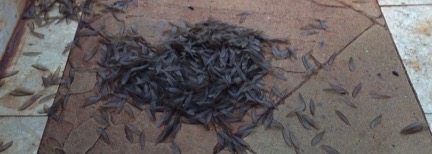
By morning, all that is left of the nocturnal swarm is piles of detached wings and brown, beelike bodies—some still squirming with life. Most of us urbanites sweep them up and toss them in the garbage, not without some feelings of disgust.
But for western Kenyans, the flying termites represent more than a temporary pest. They are a source of food, appreciated for their abundance, taste, and nutritional value. Termites are rich in protein and fatty acids. They contain iron and zinc, and may have antimicrobial properties. They are most easily collected during the rainy seasons. But the insects can also be extracted from termite mounds directly, and a typical mound can produce 20 kg of termites. Because they deteriorate rapidly, the insects are best when caught alive, from healthy environments, and eaten or processed immediately.
Some people eat the termites raw, with a pinch of salt. More often they are fried or dried, and often mixed with other food, such as beans. At the Amaica Restaurant in Nairobi, the fried ones, known as kumbe kumbe, are served as an appetizer. They are nutty-tasting, crunchy, and surprisingly filling.
More than 2.5 billion people on the planet eat insects, according to the United Nation’s Food and Agriculture Organization (or FAO), and termites are second only to grasshoppers in terms of human bug consumption, according to its 2013 report, “Edible Insects: future prospects for food and feed security.” Termites come in a variety of sizes and types. The most commonly consumed Termitidae in Kenya, according to a 2010 study include Macrotermes bellicosus, Pseudacanthotermes militaris, and Pseudacanthotermes spiniger.
In the West, however, the consumption of insects, known as entomophagy, is considered unconventional at best—something people do out of desperation when stranded in the wilderness, for example. Likewise, urban attitudes in developing countries are heavily influenced by “modern” perceptions that see insect consumption as “primitive” or only to be considered as a last resort. Thus, the popularity of kumbe kumbe declines once it hits a city like Nairobi, where it takes on the image of poor people’s food.
The truth is, we should be eating more bugs, not fewer—for ourselves and for our planet. Instead of seeing entomophagy as primitive, we need to view it as part of a sustainable answer to the rapidly increasing demand for food worldwide.
Insects are a healthy alternative to meat and fish, and can also be used as animal feed. They are greener than conventional livestock: they emit less ammonia and/or greenhouse gas, need less land or water, and are able to feed on organic waste streams. Insects are more efficient at converting feed into protein than are organisms such as cattle, pigs, or chickens. Moreover, insect harvesting requires minimal inputs or technical knowledge, and it is an important possible source of livelihood for poor people in both urban and rural environments.
Because bugs are not generally categorized as livestock, however, their production as a source of food (or animal feed) is rarely incorporated in agricultural research and development agendas, and they have been absent from major agricultural innovations. To the extent that insect farming is considered, it is largely limited to honey bees, silkworms, and scale insects (used for red colorant). When insects are considered within agricultural research and development, it is through the lens of their (considerable) role as pests or as biocontrol agents against common crop pests, e.g., using ladybugs to control aphids as an alternative to control by insecticides.
Since 2003, the FAO has had a campaign aimed at increasing the uptake of insects as a healthy and readily available alternative food source. The campaign promotes greater awareness regarding the benefits of insect consumption. Its goal is to increase knowledge-sharing among different countries and across multiple sectors (policy, education, advocacy, implementation) regarding the potentials and policy implications of an increased use of insects as food, in processed products, and for livestock feed. It also supports field projects and collaborations exploring the multiple uses of insects as food and feed. A major focus of the campaign is changing the negative image of insect consumption and highlighting its potential:
“Western societies still largely averse to the practice of eating insects will require tailored strategies that address the disgust factor and break down common myths surrounding the practice. Governments, ministries of agriculture, and even knowledge institutions in developed countries will need to be targeted, given that insects as food and feed are still largely absent from political and research agendas. Insects are still viewed as pests by a large majority of people, despite the increasing literature pointing to their valuable role in the diets of humans and animals.” – FAO, 2013
Targeted studies, supported by the FAO and others, are investigating the development and acceptability of processed food products based on insects. For example, a study published in the African Journal of Food, Agriculture, Nutrition and Development (2010) conducted research with processed products based on readily available termites and lake flies in marginal areas of Lake Victoria, Tanzania, where protein deficiency is common. Their findings suggest that insect-based products, such as crackers, sausages, and muffins, have commercial potential and could play a significant role in improving food security and income generation in the region. Further studies on edible insects are occurring in institutions as varied as Wageningen University (Netherlands); Montana State University (USA); University of Copenhagen (Denmark); Khon Kaen University (Thailand); Chinese Academy of Forestry, Kunming, Yunnan Province; Jaramogi Oginga Odinga University of Science and Technology (Kenya); Centre de Recherche pour la Gestion de la Biodiversité (Benin); National Autonomous University of Mexico; and the National University of Laos.
What will it take to get more insects on our plates?
Clearly, a targeted makeover is needed to overcome the negative biases against insect consumption, both in terms of the “ick” factor and its image as a poor person’s food. Though the task may seem great, it is not unprecedented. Consider the cases of lobster and shrimp. Like insects, these organisms are arthropods, characterized by a hard outer shell, segmented body, and jointed appendages—and they were historically considered poor peoples’ food. It was only 80 or so years ago that lobster (known as the cockroach of the sea) went from being throw-away food—given to cats, spread as fertilizer, fed to prisoners—to becoming a gourmet delicacy, thanks to growing demand and better recipes. Shrimp experienced a similar transition in the 20th century, when it replaced oysters as the cocktail shellfish of choice.
More recent examples of foods that have been propelled from elements of meals for subsistence to gourmet rankings in upscale supermarkets and restaurants worldwide include quinoa, kale, native potatoes, and even the lowly Brussels sprout.
The FAO suggests that further changes would help assure greater use and acceptance of insects in our diets, including:
- Technological innovations, such as simple ways of rearing insects at scale, or methods to simultaneously control pest insects by harvesting them as food
- Food and feed legislation that encompasses insect production and trade, with the development of regulatory frameworks in collaboration with government, academia, and industry
- Sustainable ways of producing insects for food (or feed), including nature conservation strategies
- Further documentation of the nutritional value of insects, and investigation of the bioavailability of micronutrients in insects, especially iron and zinc, as a way to address common deficiencies in the tropics
- Greater emphasis on and understanding of environmental benefits of insect consumption, using quantitative studies of the environmental impacts of harvesting/farming insects compared with traditional livestock or agricultural production
- More research on preservation and processing techniques to increase shelf life of insect products—and to extract insect protein for the food and feed industries
- Clarification of the socio-economic benefits of insect farming and gathering as income and food-generation activities for the poor
With these considerations in mind, the swarms of termites in Nairobi take on a new dimension. Termites are among the most successful groups of insects on earth. They are available on every continent, except for Antarctica, and live in profusion in cities, such as Nairobi. It’s time we city dwellers stopped swatting at these flying sources of protein, and considered savoring them instead.
Valerie Gwinner
Nairobi
Further reading
UN Food and Agriculture Organization. Edible insects: Future prospects for food and feed security. FAO Forestry Paper 171. Rome. 2013. Link: http://www.fao.org/docrep/018/i3253e/i3253e00.htm
Reis de Figueirêdo REC, Vasconcellos A, Policarpo IS, Nóbrega Alves RR. Edible and medicinal termites: a global overview. J Ethnobiol Ethnomed. Vol. 11, No. 1, 2015. Link: https://ethnobiomed.biomedcentral.com/articles/10.1186/s13002-015-0016-4
Ayieko MA, Oriaro V, Nyambuga IA. Processed products of termites and lake flies: Improving entomophagy for food security within the Lake Victoria region. African Journal of Food Agriculture Nutrition and Development, Vol. 10, No. 2, 2010, pp. 2085-2098. Link: http://www.bioline.org.br/request?nd10013
About the Writer:
Valerie Gwinner
Valerie Gwinner is a writer and communications consultant, currently living in Nairobi, Kenya. She has over 25 years experience in public health, agricultural development, and gender issues as a writer, policy analyst, and senior manager.

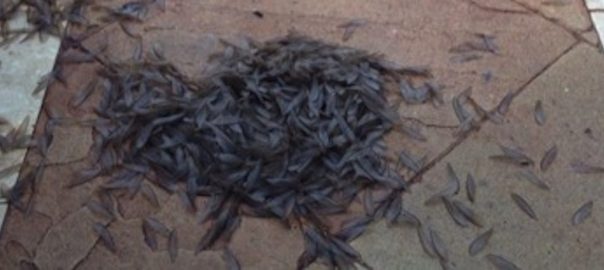






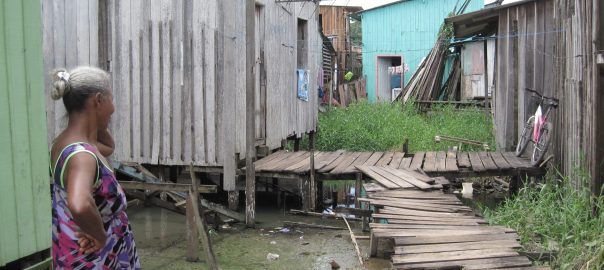
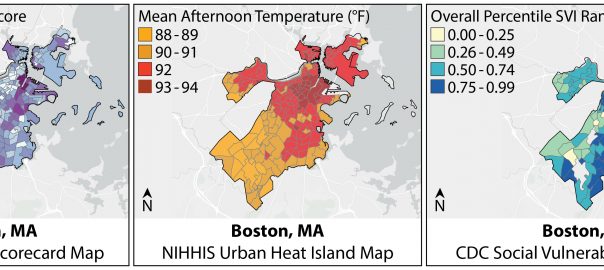
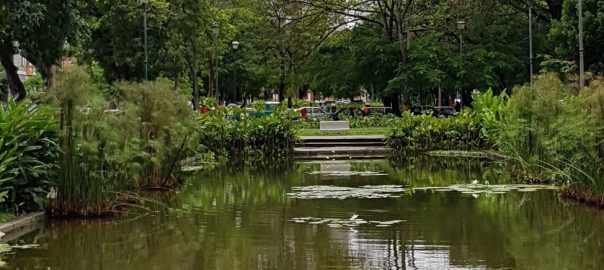

hey
Excellent article which raises some rather worrying implications. Insects are already under pressure. Humans are overharvesting and spraying them into extinction. http://www.endangeredspeciesinternational.org/insects5.html
How do we get from here to a situation where humans stop consuming the planet and let other species live and reproduce?
I try in my own small way. I use no chemicals in my garden and I let insects eat whatever they like. The plants grow back. The frogs, bats and birds get to eat.